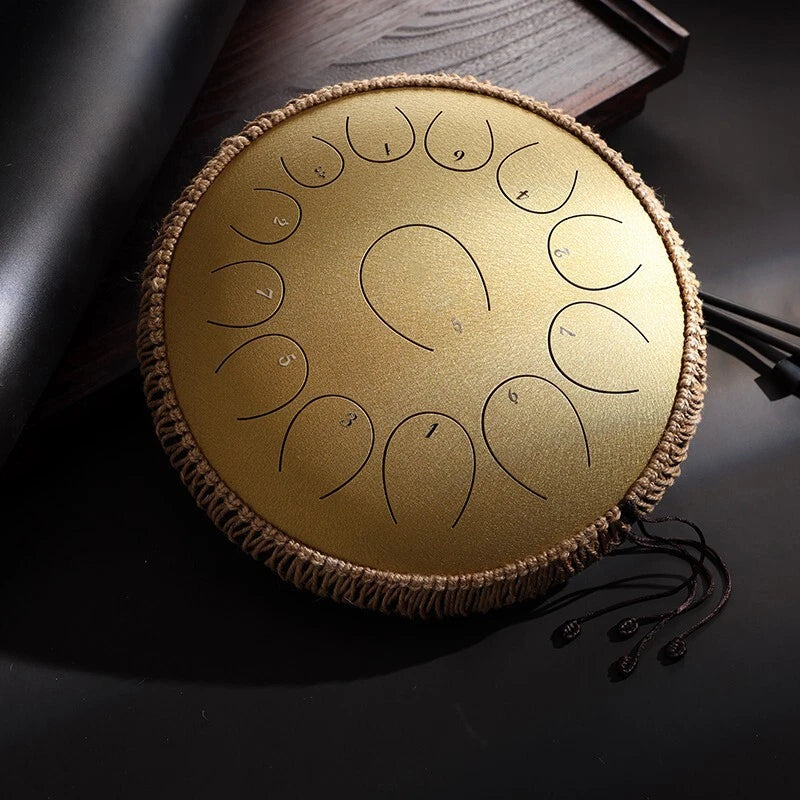Zero-Basis Entry: How to Play a Steel Tongue Drum? A Super Detailed Beginner's Tutorial

Have you ever been captivated by the ethereal, healing sounds of a steel tongue drum? As an instrument with no prerequisites, the steel tongue drum attracts countless beginners with its unique charm. With no complex music theory required and no "wrong" notes, it allows anyone to easily embark on a musical journey.
If you've just acquired a steel tongue drum but don't know where to start, this detailed tutorial will guide you step-by-step from zero-basis to playing beautiful melodies!
Step One: Getting Started - Understanding Your Steel Tongue Drum
Before you begin playing, take a moment to get to know your instrument.
-
Recognize the "Tongues" and Notes: The drum's surface is composed of tongues of different sizes, each corresponding to a fixed musical note.
-
No Tuning Required: Most steel tongue drums come pre-tuned to a harmonious scale from the factory. This means no matter how you strike the tongues, you won't produce a dissonant sound, which is key to its beginner-friendly nature!
-
Choose Your Playing Method: The steel tongue drum has two main playing methods: mallet playing and hand playing. Mallets produce a clearer, more powerful sound, while hands can create a softer, more delicate tonal variation.
Step Two: Master the Basic Striking Method - Easily Create Beautiful Sounds
1. Playing with Mallets
-
Grip: Gently hold the end of the mallet with your thumb and index finger, relaxing your other fingers and letting the mallet hang naturally.
-
Technique: Gently tap the center of the tongue with the mallet head, and then let the mallet bounce off immediately. Avoid pressing down or maintaining contact for too long; this is how you produce a clear, long-lasting sustain.
2. Playing with Hands
-
Fingering: Primarily use your index finger and thumb. Use the pad of your fingertip to quickly and elastically flick the tongue.
-
Technique: Again, make quick contact and immediately lift your finger. Using the elasticity of your fingertip will produce the sound. This method allows you to feel the instrument more directly, and the tone is softer, making it perfect for improvisation.
Step Three: Start Your Journey of Improvisation
Forget the sheet music and enjoy your freedom! The most enchanting part of the steel tongue drum is its improvisational nature.
-
Free Exploration: Feel free to strike the tongues you like, playing according to your inner feelings. You'll discover that no matter how you combine the notes, the sound is always harmonious and beautiful.
-
Find a Rhythm: Try to find a simple, repeating rhythm, such as "tap, ta-tap, tap," and then add new notes to it to slowly create your own melody.
-
Meditation and Relaxation: During your playing, don't put any pressure on yourself. Treat it as a form of meditation, focusing on the sounds in the present moment, and let the healing tones of the steel tongue drum help you relax your mind and body.
Step Four: Trying Simple Music Sheets - From Beginner to Proficient
Once you are comfortable with improvisation, you can try some simple music sheets to improve your skills.
-
Recognize Numbered Notation: Most music for the steel tongue drum uses numbered notation (1, 2, 3...), where each number corresponds to a note on a tongue. You simply need to match the numbers and strike in order.
-
Start with Simple Tunes: There are many beginner-friendly songs available online for the steel tongue drum, such as "Twinkle, Twinkle, Little Star" or "Castle in the Sky." Starting with these familiar melodies can give you a great sense of accomplishment and help you gradually master rhythm.